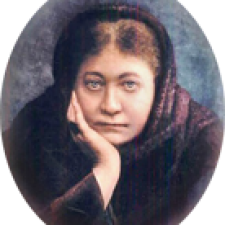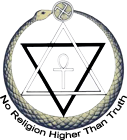Altruism, Compassion and Service
Theosophy – Living the Life
The Practice of Theosophy: Living the Life
Altruism – Compassion and Service – The Heart Doctrine
Related References
(Voice of the Silence, Fragment 11: page 25 “The Two Paths:”) [The pages refer to the Theosophy Company edition of the Voice.]
AND now, O Teacher of Compassion, point thou the way to other men. Behold, all those who knocking for admission, await in ignorance and darkness, to see the gate of the Sweet Law flung open!
The Voice of the Candidates. Shall not thou, Master of thine own Mercy, reveal the Doctrine of the Heart? 1. (Footnote: 1 The two schools of Buddha’s doctrine, The Esoteric and the Exoteric, are respectively called the Heart and the Eye Doctrine.) Shall thou refuse to lead they Servants unto the Path of Liberation?
[Quoth the Teacher] Who shall first hear the doctrine of two Paths in one, the truth unveiled about the Secret Heart? The Law which, shunning learning teaches Wisdom, reveals a tale of woe.
Alas, alas, that all men should possess Alaya, the one with the great Soul, and that possessing it. Alaya should so little avail them!
Behold how like the moon, reflected in the tranquil waves, Alaya is reflected by the small and by the great, is mirrored in the tiniest atoms, yet fails to reach the heart of all. Alas, that so few men should profit by the gift, the priceless boon of learning truth, the right perception of existing things, the Kingdom of the non-existent!
(Voice of the Silence, page 36)
To live to benefit mankind is the first step. To practice the six glorious virtues 1. {Footnote: 1. To “practice the Paramita Path” means to become a Yogi with a view of becoming an ascetic.} is the second.
(Robert Crosbie, The Friendly Philosopher, page 80)
ONE: “Sama.” It consists of obtaining perfect mastery over the mind (the seat of emotions and desires), and in forcing it to act in subordination to the intellect which had been strengthened by attaining –
(1.) “Right Knowledge of the real and the unreal” (Right Philosophy). (2) “Perfect indifference to the fruits of one’s actions, both here and hereafter”. (Renunciation of the fruits of actions.)
TWO- “Dama.” Complete mastery over bodily acts.
THREE- “Uparati.” Renunciation of all formal religion, and the acquirement of contemplation of objects without being in the least disturbed in the performance of the great task one has set before oneself.
FOUR-“Titiksha.” Cessation of desire and a constant readiness to part with everything in the world.
FIVE-“Samadana.” That which renders the student constitutionally incapable of deviating from the right path.
SIX-“Shrada.” Implicit confidence on the part of the pupil in his Master’s power to teach, and his own power to learn.
SEVEN- One other, and the last accomplishment required, is an intense desire for liberation from conditioned existence and for transformation into the one life.
(Voice of the Silence, page 31)
If thou art taught that sin is born of action and bliss of absolute inaction, then tell them that they err. Non-permanence of human action, deliverance of mind from thralldom by the cessation of sin and faults, are not for “Deva Egos.” 1. (Footnote; 1. The reincarnating Ego.) Thus saith the “Doctrine of the Heart.” 2. (Footnote: 2. True, divine Wisdom.)
Additional Related References of Interest
- The Bhagavad – Gita (Judge Edition)
- The Dhammapada
- HPB’s Key to Theosophy
Back to Theosophy – Living the Life

